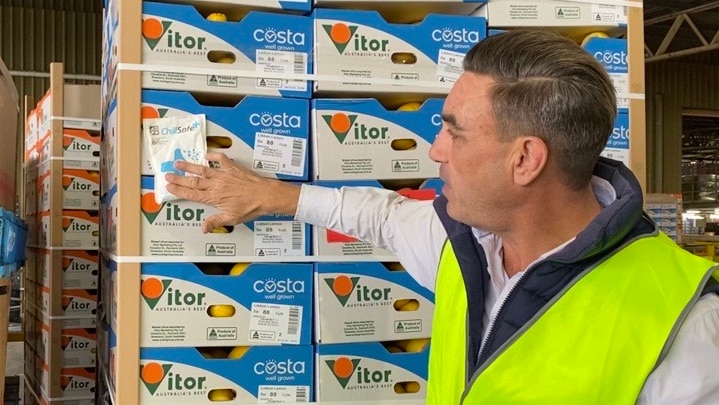The operation to lift the first of two Tasmanian tugboats that were sunk in January has exposed the damage done to them by a massive cement carrier in Devonport.
Key points:
- The two cranes used can lift 500 tonnes, but the water, marine growth and fuel left in the tugboat meant the exact weight was unknown until the operation began
- An estimated 60,000 liters of fuel spilled into the river shortly after the two tugs were sunk
- The January crash is the subject of a safety bureau investigation
On Sunday, the heavy-lift ship AAL Melbourne lifted the first wrecked tug, the York Cove, from the Mersey River.
In a statement, TasPorts chief operating officer Stephen Casey said TasPorts, its insurer (Shipowners) and United Salvage had been “working diligently on the salvage effort.”
“The lift of the first tug was a slow process, but it needed to be,” he said.
“It is made complex by a series of environmental factors, including weather, wind and river currents that have been affected by recent rain, and the condition of the wrecks themselves in the water.
Mr Casey said the “allision” had resulted in an estimated tens of thousands of liters of fuel being spilled into the river.
“The York Cove weighs 310 tonnes. The two cranes used to lift the tug provides a lifting capacity of 500 tonnes, but the water, marine growth and fuel left in the vessel means the exact weight is unknown until we start lifting.
“Further, as the weight of the tug comes under tension, the lifting ship needs to remain upright, so it is constantly pumping its ballast tanks.”
Mr Casey said a decision on the commencement of the salvage works for the second tug, named Campbell Cove, would be made after the first job was complete.
“We have a positive weather window until Wednesday to complete the second lift,” he said.
“In planning and executing the second lift, just as was the case with the first lift, TasPorts, the salvage company and the operators of the AAL Melbourne will be working to manage the safety of TasPorts staff and all contractors on the wharf.
“Ensuring the protection of the environment and the integrity of the oil spill response boom around the wreck site is maintained will also be a key focus.”
Mr Casey said Sunday’s operation was an “important step forward for TasPorts” which had been focused on removing the York Cove and Campbell Cove wrecks and returning all commercial berths at the Port of Devonport to full operations, “while at the same time carefully managing environmental and safety”.
Soon after the crash, the Australian Transport Safety Bureau launched an investigation, calling for any witnesses or anyone with information to contact them.
.

